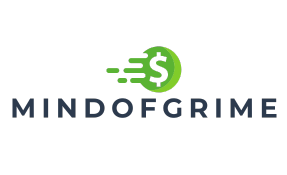Table of Contents
ToggleDebt can feel like that one uninvited guest who just won’t leave the party. It lurks in the corner, reminding everyone of its presence while you try to enjoy the festivities. But what if tackling debt could be more than just a chore? What if it could be a journey filled with insights, laughter, and a dash of wit?
In the world of finance, debt editorials serve as a guiding light, shedding light on the often murky waters of borrowing and repayment. These pieces not only provide valuable information but also entertain readers with relatable anecdotes and clever observations. So buckle up and prepare to dive into the world of debt editorials—where knowledge meets humor, and financial freedom isn’t just a dream but a reality waiting to be seized.
Overview of Debt Editorials
Debt editorials serve as insightful resources for individuals navigating the complexities of borrowing and repayment. These pieces offer a blend of practical advice and relatable anecdotes, making financial topics engaging and accessible. Insightful stories often highlight common mistakes, helping readers avoid pitfalls.
Readers often find humor woven throughout these narratives, which eases the tension surrounding financial discussions. An entertaining approach makes it easier for individuals to reflect on their own experiences with debt, creating a connection between the author and the audience.
Debt editorial content covers various aspects, including budgeting tips, debt repayment strategies, and guidance on responsible borrowing. Each article typically clarifies complex financial concepts, making them understandable for the average person. Providing actionable steps empowers readers to take control of their financial situations.
Additionally, editorials often feature expert opinions and data-driven insights. These elements reinforce the credibility of the information presented. Citing authoritative sources boosts trust and encourages readers to apply the advice shared.
Engagement with debt editorials can foster financial literacy and awareness. As readers gain knowledge, they become better equipped to make informed financial decisions. Overall, the role of debt editorials extends beyond mere entertainment; they act as a catalyst for personal growth and financial stability.
Importance of Debt Editorials

Debt editorials serve as essential tools in navigating the complex world of finances. They provide insights, recommendations, and relatable narratives that make understanding debt easier.
Role in Financial Literacy
Debt editorials enhance financial literacy by breaking down intricate topics. They clarify concepts such as budgeting and borrowing, making them accessible to the average reader. Through engaging articles, individuals gain knowledge on managing their finances effectively. Readers often learn about common pitfalls and how to avoid them, fostering informed financial decisions. Actionable advice combined with expert insights equips readers with practical skills. This understanding empowers many to take control of their financial futures.
Impact on Public Opinion
Debt editorials influence public opinion by framing discussions around debt. They often present relatable stories, making daunting topics more approachable. These narratives shift perceptions of debt from shame to empowerment. By incorporating humor and personal experiences, they invite wider audiences to engage in financial conversations. Such editorials highlight the necessity of responsible borrowing and smart repayment strategies. Consequently, they shape societal attitudes, promoting a culture of financial awareness and responsibility. This impact can lead to healthier financial habits on a larger scale.
Types of Debt Editorials
Debt editorials encompass various types, each providing distinct insights into financial challenges. Two prominent categories include personal finance editorials and economic policy editorials.
Personal Finance Editorials
Personal finance editorials focus on individual financial management strategies. They offer budgeting tips, debt repayment plans, and responsible borrowing advice. Readers gain practical tools for improving their financial health through these pieces. Engaging narratives often accompany expert opinions, making complex topics easier to grasp. Actionable steps empower individuals to make informed choices regarding their finances and foster good habits.
Economic Policy Editorials
Economic policy editorials address broader financial issues impacting society. They analyze legislation, interest rates, and market trends affecting personal debt climates. Understanding economic implications helps readers navigate their financial decisions effectively. These editorials often draw connections between policy changes and personal finance challenges. By spotlighting systemic issues, they encourage discussions around sustaining economic well-being. Engaging content fosters awareness, allowing readers to remain informed and proactive in financial matters.
Analyzing Notable Debt Editorials
Debt editorials provide valuable insights into financial management, showcasing diverse perspectives and approaches. Two notable cases illustrate their impact on public perception and discussions surrounding debt.
Case Study 1: Editorial Impact
Editorials often influence readers’ views on debt topics. One such piece explored personal stories of individuals overcoming significant debt. Through this narrative, the editorial highlighted practical strategies for debt repayment, such as prioritizing high-interest debts. Readers expressed a sense of empowerment, motivated by relatable experiences. Additionally, the editorial included expert opinions, providing authoritative insights that reinforced its message. By fostering community discussion, it transformed the conversation around financial challenges, prompting many to take action regarding their financial health.
Case Study 2: Controversial Opinions
Some debt editorials provoke debate with controversial viewpoints. An example emerged where an editorial criticized established repayment methods, arguing for more innovative solutions. This piece stimulated discussions about the effectiveness of traditional budgeting techniques versus modern technology-driven approaches. Critics raised concerns, claiming that the unconventional methods lacked credibility. Supporters, however, appreciated the fresh perspective that challenged the status quo. Engaging narratives from both sides facilitated a broader dialogue, allowing readers to explore differing opinions on responsible borrowing and repayment strategies.
Future of Debt Editorials
Emerging trends indicate that debt editorials will continue to evolve in response to changing financial landscapes. Increasing access to technology results in more platforms where these editorials can be shared. Readers can expect personalized content tailored to their specific financial situations, enhancing the relevance of advice.
Moreover, data analytics will likely play a significant role in shaping editorial content. As insights from consumer behavior become more available, editors can address common concerns based on real-time financial trends. Writers may include interactive elements in digital editorials, making the reader experience more engaging.
Social media’s influence on financial discussions cannot be overlooked. It provides a space for immediate feedback, allowing debt editorials to adapt and refine their messaging swiftly. Additionally, collaboration between financial experts and relatable figures can enhance credibility while appealing to wider audiences.
Innovative storytelling approaches will make complex financial information digestible. Incorporating multimedia elements, such as videos and infographics, helps clarify intricate topics. This shift towards visual communication aids in breaking barriers associated with financial literacy.
The role of humor in future debt editorials will remain significant. Light-hearted narratives will continue to set a welcoming tone, encouraging open dialogue about debt and finances. As discussions evolve, these editorial pieces can further destigmatize financial struggles, promoting a culture of open conversation.
Changes in legislation and economic policy will influence editorial foci. Anticipating shifts in borrowing laws and repayment regulations can guide content creation. Furthermore, encouraging proactive discussions around financial responsibility will foster informed decision-making among readers.
Debt editorials play a crucial role in transforming the conversation around financial management. By combining practical advice with engaging narratives, they empower readers to navigate their financial journeys with confidence. These pieces not only clarify complex topics but also foster a sense of community and understanding among individuals facing similar challenges.
As the landscape of personal finance continues to evolve, debt editorials will adapt to meet the needs of their audiences. With a focus on innovation and accessibility, they’ll remain essential tools for promoting financial literacy and responsibility. Embracing the humor and relatability found in these editorials can make the path to financial freedom feel less daunting and more achievable.










